SIM800L GSM Module: Description, Pinout, Features and How to Use SIM800L with Arduino
SIM800L GSM module is a versatile and compact device that is ideal for a wide range of applications. Its support for quad-band GSM/GPRS, SMS, and low power consumption make it an excellent option for IoT projects, home automation, and remote monitoring. With its compact size and easy-to-use interface, the SIM800L is an excellent choice for anyone looking to build connected devices that can communicate over the GSM network.
Catalog
Ⅰ SIM800L Description
The SIM800L is a GSM/GPRS module designed for use in embedded systems. It provides voice, SMS, and data connectivity for applications requiring remote communication. The module is small in size and low in power consumption, making it suitable for use in portable and battery-powered devices.
The SIM800L operates on quad-band GSM/GPRS networks, meaning it can be used worldwide. It supports GPRS Class 10 data transfer up to 85.6 kbps for upload and download. It also has an integrated TCP/IP stack, allowing it to communicate with the Internet. The module includes a serial interface for communication with a microcontroller, and it supports both AT commands and GPRS commands.
The SIM800L can be used for various applications, including vehicle tracking, remote monitoring and control, and home automation. It can also be used in industrial applications, such as remote sensing and control, and in medical devices, such as remote patient monitoring. Overall, the SIM800L is a reliable and versatile GSM module that provides connectivity for a wide range of applications.
Ⅱ SIM800L Features
Quad-Band Support: The module supports quad-band 850/900/1800/1900MHz frequencies, making it compatible with most GSM networks worldwide.
GPRS Support: The module supports GPRS multi-slot class 12 and class 10 for data transfer rates of up to 85.6 kbps.
Integrated TCP/IP Stack: The module has an integrated TCP/IP stack, making it easy to connect to the internet.
Built-in Bluetooth: The module has built-in Bluetooth 3.0 and EDR (Enhanced Data Rate) support, making it easy to connect to other Bluetooth devices.
Compact Size: The SIM800L module is compact, making it easy to integrate into small projects.
Low Power Consumption: The module has a low power consumption, making it ideal for battery-powered applications.
SIM Card Slot: The module has a built-in SIM card slot, making it easy to swap SIM cards.
AT Commands: The module communicates with microcontrollers using AT commands, making it easy to integrate into projects.
Voice Support: The module supports voice calls via a 3.5mm audio jack and a built-in microphone.
SMS Support: The module supports SMS messaging, making it easy to send and receive text messages.
Ⅲ SIM800L Pinout
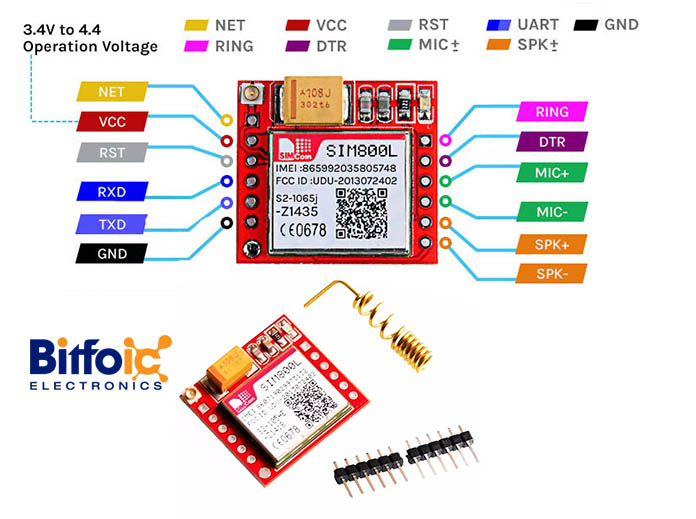
Figure1-SIM800L Pinout
Ⅳ SIM800L Pinout Configuration
|
Pin name |
Pin description |
|
NET |
A pin where you can solder the helical antenna that comes with the module. |
|
VCC |
This pin is used to supply power to the module. It should be connected to a regulated 3.7V to 4.2V DC power supply. |
|
GND |
This pin is the ground reference for the module. |
|
RXD |
This pin is the receive data pin and should be connected to the transmit pin (TXD) of the host microcontroller or UART. |
|
TXD |
This pin is the transmit data pin and should be connected to the receive pin (RXD) of the host microcontroller or UART. |
|
RST |
This is the reset pin, which is active low. When pulled low, it resets the module |
|
VBAT |
This pin is used to monitor the battery voltage. It should be connected to the positive terminal of a Li-ion battery. |
|
GND |
This is another ground reference pin for the module. |
|
RI |
This is the ring indicator pin, which is used to detect incoming calls or SMS messages. |
|
DTR |
This pin is used to enable/disable the sleep mode of the module. When pulled low, it puts the module in sleep mode. |
|
MIC+ and MIC- |
These are the microphone input pins for voice communication. |
|
SPK+ and SPK- |
These are the speaker output pins for voice communication. |
Note: The pinout may differ slightly depending on the specific module manufacturer. Be sure to consult the datasheet provided by the manufacturer for more accurate information.
Ⅴ SIM800L Applications
- Remote System Monitoring
- Home Alarm System
- Remote Controlling System
- Security Access Control
- Vehicle tracking
- SMS Gateway
- Pre-paid Electricity
Ⅵ SIM800L GSM/GPRS Module Parts
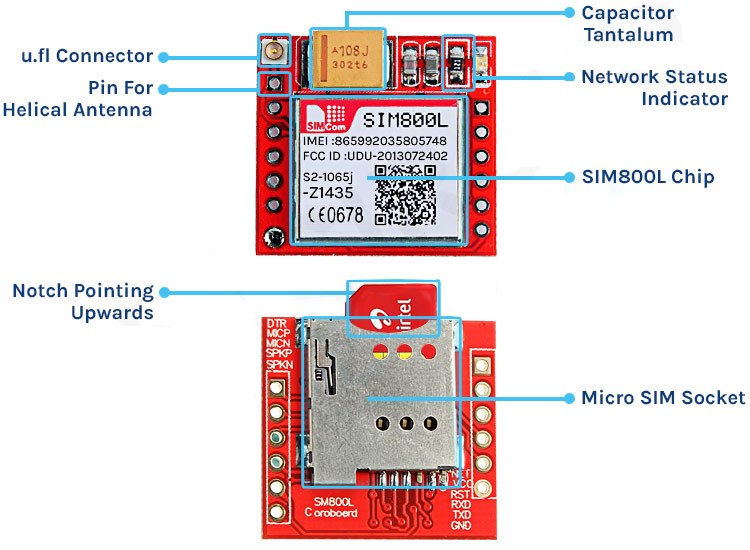
Figure2-SIM800L GSM/GPRS Module Parts
Ⅶ Circuit Diagram of the SIM800L GSM/GPRS Module
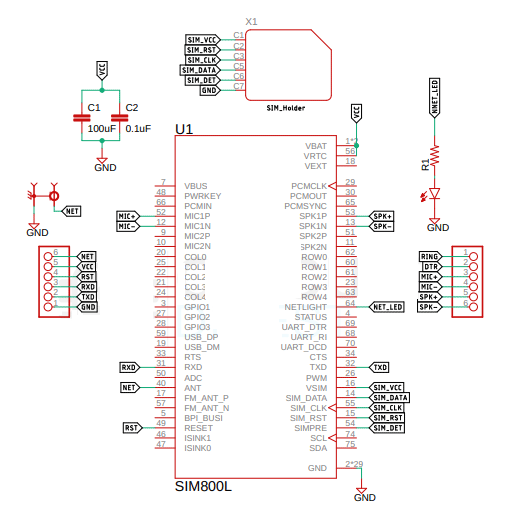
Figure3-Circuit Diagram of the SIM800L GSM/GPRS Module
Ⅷ How To Use SIM800L GSM Module?
The SIM800L GSM module is a popular module for adding cellular communication capabilities to various projects. Here are the basic steps for using the module:
Power the module: The SIM800L module requires a 5V DC power supply. You can use a voltage regulator to regulate the voltage down to 5V, or you can use a battery or a power bank.
Connect the antenna: The module requires an antenna to receive and transmit signals. The antenna should be a 50-ohm impedance antenna, and you can connect it to the module using a UFL connector.
Connect the module to a microcontroller: You can connect the module to a microcontroller such as an Arduino or a Raspberry Pi using a TTL serial interface. The SIM800L module uses a standard UART interface, and you can connect the RX and TX pins of the module to the RX and TX pins of the microcontroller.
Configure the module: Before you can use the module, you need to configure it with the correct settings. You can send AT commands to the module using the serial interface to configure it. Some common AT commands are:
AT: Check if the module is responding
AT+CPIN: Enter the SIM card PIN
AT+COPS?: Check the available networks
AT+CREG?: Check the network registration status
AT+CGATT?: Check the GPRS attachment status
Send and receive SMS messages: Once the module is configured, you can use it to send and receive SMS messages. You can send an SMS message using the AT+CMGS command, and you can receive SMS messages using the AT+CMGL command.
Make and receive phone calls: You can also use the module to make and receive phone calls. You can make a phone call using the ATD command, and you can receive a phone call using the ATA command.
The SIM800L is a GSM module with a serial interface. It can send and receive text messages and receive phone calls. It can also connect to the internet and receive FM signals. The SIM800L can be connected to a microcontroller using the serial UART interface, and in the example shown below, connected to an Arduino.
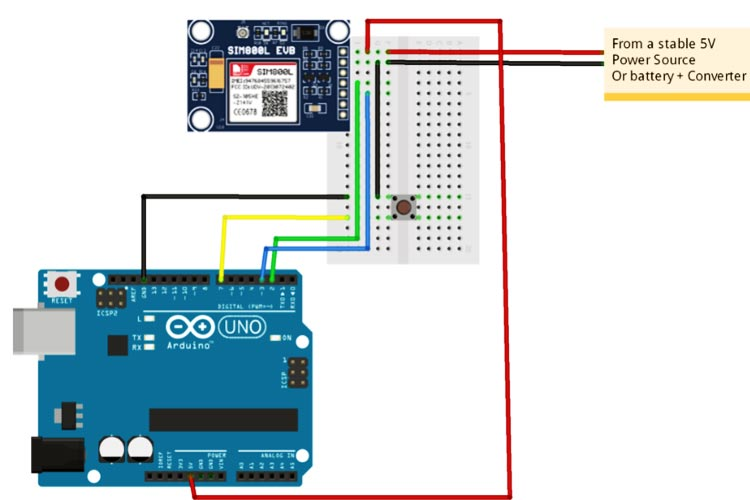
Figure 4-How To Use SIM800L GSM Module?
The module recognizes AT commands, which can be used to do things like check signal strength, get the SIM card number, and check the network connection and battery state, in addition to reading texts, and making and receiving calls.
Ⅸ 2D Model and Dimensions
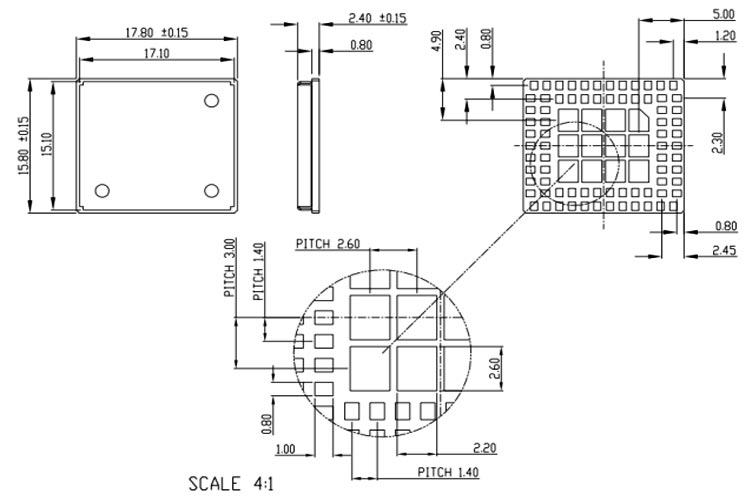
Figure5-2D Model and Dimensions
Ⅹ How to Connect SIM800L GSM Module with Arduino?
- VCC pin of SIM800L to 5V pin of Arduino
- GND pin of SIM800L to GND pin of Arduino
- TXD pin of SIM800L to RX pin of Arduino
- RXD pin of SIM800L to TX pin of Arduino
Power up the SIM800L module by connecting a power source of 5V to the VCC pin.
Install the necessary libraries in Arduino IDE:
GSM.h library
SoftwareSerial.h library
Open a new Arduino sketch and add the following code:
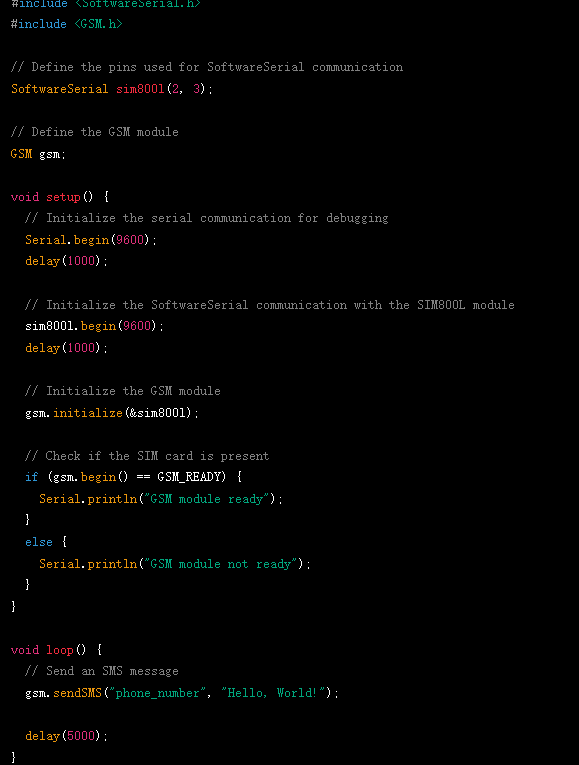
Figure6-code
Upload the code to the Arduino board and open the Serial Monitor to view the output.
Replace "phone_number" in the code with the actual phone number you want to send the SMS to.
Test the setup by sending an SMS message to the specified phone number.
Note: The SIM800L module requires a SIM card to work. Make sure to insert a valid SIM card with credit or a valid plan to use it.

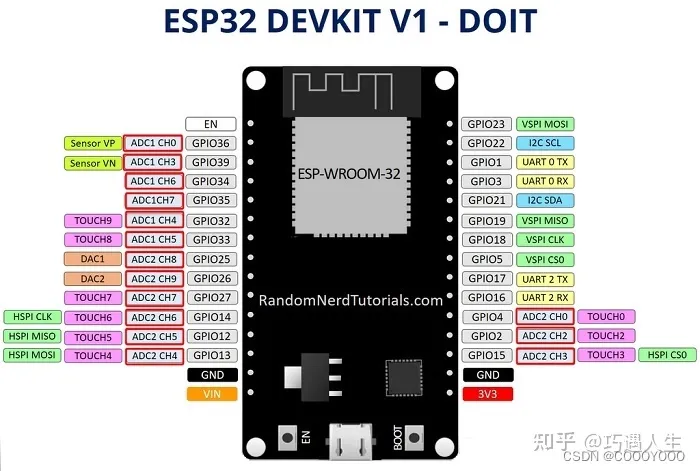 How to resolve the WiFi and ADC2 Sharing Dilemma?4/19/2024 18
How to resolve the WiFi and ADC2 Sharing Dilemma?4/19/2024 18ESP32-CAM can be used in various Internet of Things situations and is suitable for home smart devices, industrial wireless control, wireless Monitoring, QR wireless identification, wireless positioning system signals, and other IoT applications are ideal solutions for IoT applications.
Read More >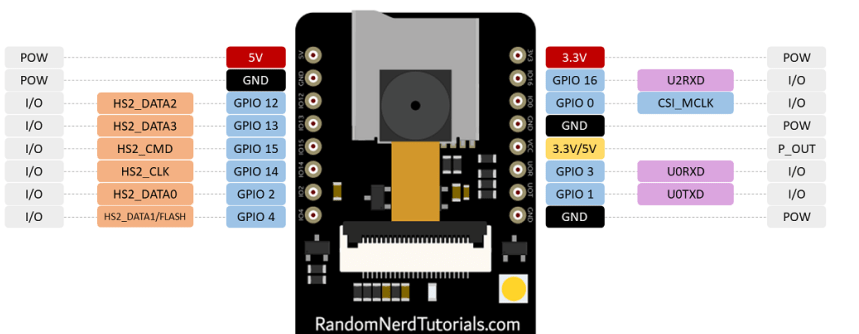 ESP32-CAM Pinout Explanation and How to Use?4/18/2024 33
ESP32-CAM Pinout Explanation and How to Use?4/18/2024 33ESP32-CAM is a development board with an ESP32-S chip, an OV2640 camera, a microSD card slot, and several GPIOs for connecting peripherals. ESP32-CAM is a small-sized camera module. The module can work independently as the smallest system, with a size of only 27*40.5*4.5mm.
Read More >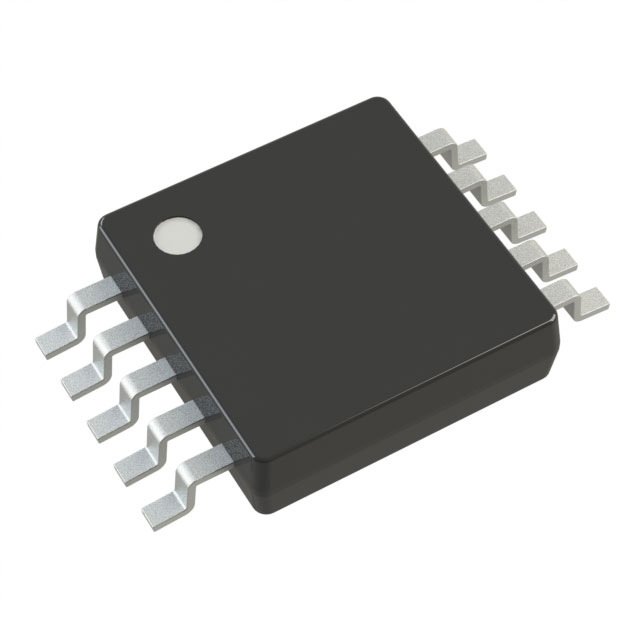 Stand-Alone Linear Li-Ion / Li-Polymer Charge Management Controller MCP738334/9/2024 55
Stand-Alone Linear Li-Ion / Li-Polymer Charge Management Controller MCP738334/9/2024 55The MCP73833/4 is a highly advanced linear charge management controller for use in space-limited, cost sensitive applications. Both a 10-lead, MSOP and a 10-lead, DFN packaging measuring 3 mm by 3 mm are offered for the MCP73833/4. In addition to its tiny size, the MCP73833/4 is perfect for portable applications because it requires a few additional components.
Read More >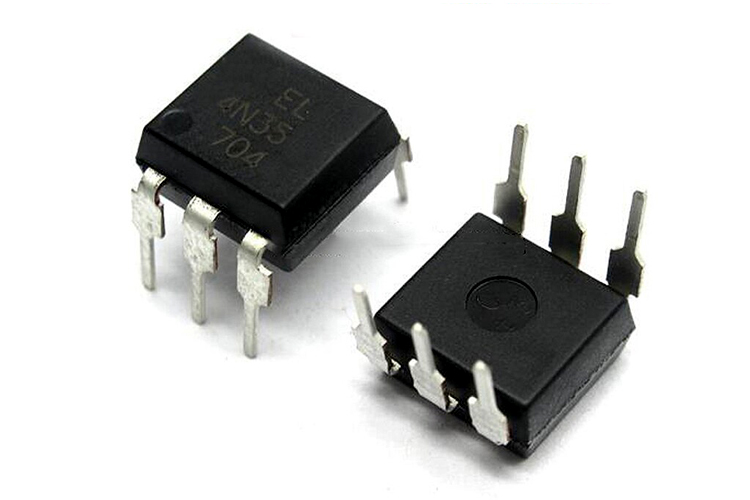 Optocoupler IC 4N35: Pinout, Datasheet, Features and Applications3/26/2024 92
Optocoupler IC 4N35: Pinout, Datasheet, Features and Applications3/26/2024 92In the realm of electronics, where connectivity and isolation are paramount, the 4N35 optocoupler IC stands as a beacon of reliability and versatility. This small yet mighty device plays a crucial role in ensuring signal integrity and safety across a wide range of applications. In this article, we delve into the intricacies of the 4N35 optocoupler IC, exploring its datasheet, pinout, circuit diagram, and diverse uses.
Read More >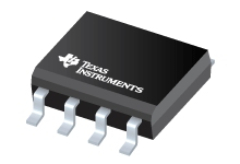 UA741CP datasheet ,Specification, Features and Application3/21/2024 91
UA741CP datasheet ,Specification, Features and Application3/21/2024 91The UA741CP is a general-purpose operational amplifier in an 8-pin DIP package. The high common-mode input voltage range and lack of latch-up make the amplifier ideal for voltage follower applications.
Read More >











